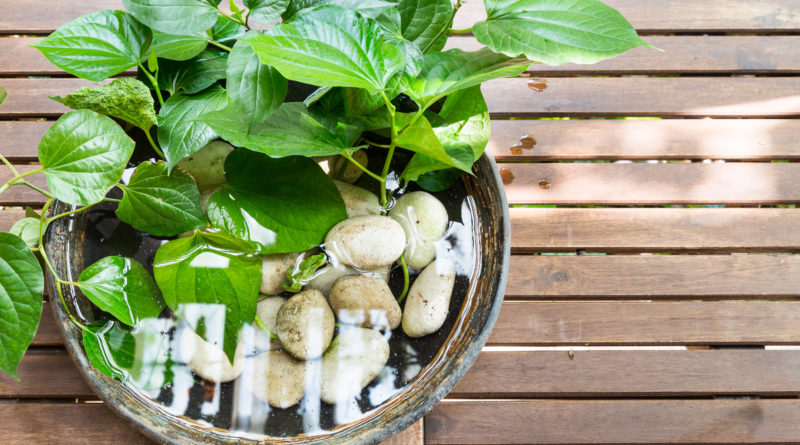How to Build An Indoor Water Garden
3,274 total views, 4 views today
Just like there are many different plants, there are different types of gardens and gardening. One type of gardening some may have heard or never tried before is indoor water gardening, which is a garden where plants are rest in water rather than soil. In this post, we’ll cover the basics from how to start and what sort of plants you should consider for this project.
First, let’s cover the basics of growing plants in water. For one, most plants are able to grow easily in water. It’s for this reason why one of the most common practices for gardeners to get into water gardens is to take clippings from pre-existing plants. From there, they place those clippings into bottles of water. In many cases some people place them in an area with direct sunlight like a kitchen windowsill.
By doing something like this you get to save money by not buying more plants initially. Furthermore growing the plants in water can allow the plant to be more flexible in arrangement as well. If you stick with potted plants you can’t mix and match as much as cutting individual pieces and arranging them.
The other thing to be keeping in mind with water gardens is that growing the plants indoor or outdoor will always be slower when using water only as opposed to anything soil-based. That being said, the plants are going to remain lush for a longer period of time, meaning you won’t need to maintain them as diligently.
Now that you understand that, lets get into how you can grow plants in water. As mentioned above there is the clipping method, but there is more to it than that. For example, you need to be considering what container you are using in the first place. It common for people to be using bottles or glass to grow plants in, but you can consider other options as well. The key thing is that the bottle or container is waterproof and has no traces of copper, lead, or brass. The big reason for that is that metal corrode when reacting to fertilizer and result in the plant getting damaged. Also if you’re considering algae or want to avoid it, you want a dark or an opaque container which will prevent algae formation.
Once you get the container, you can then be creative with it by mixing in florist foam, gravel, pebbles, sand, marbles, beads or other materials like that to give the pot a bit of a personal touch. This should fill up three-quarters of the pot. The other quarter is a mixture of water and fertilizer. Make sure that the fertilizer is water soluble. Once that mixture is complete you are ready for your plant.
When it comes to hydroponic farming, there are many good plants out there for you to be planting in these pots. Before we get into them here’s some general tips to keep in mind:
Any hanging or creeping plants are some of the easiest plants to root into a water environment. If you want to start with that and have a houseplant that’s like that, then your job will be made easy this way.
You also want to make sure that you wash all the soil off of the roots of the plants that you remove from the soil. The same applies to decayed or dead stems or leaves.
Some other safe bets for great plants to place in a water garden are plants like Chinese Evergreen (aka Aglaonemas), English Ivy, Moses-in-a-cradle (or Rhoeo), Arrowhead, or even a wax plant. By using some of those plants and the clippings from your other plants you can be sure to create a fantastic water garden.

